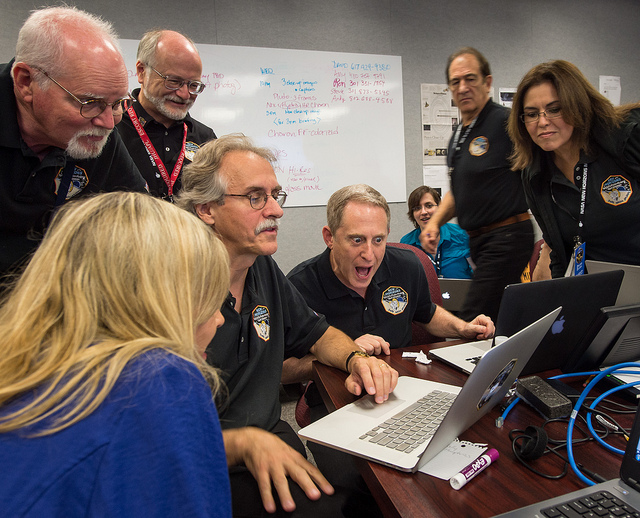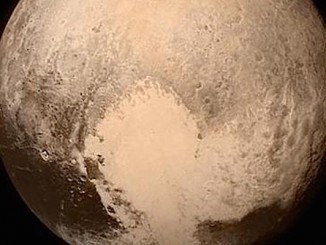
Scientists are crunching data for a press conference Wednesday, and there is high anticipation for the release of the first close-up images from Tuesday’s historic flyby of Pluto.
The last image returned by New Horizons came to Earth late Monday, showing a full global view of Pluto’s day side from a range of 476,000 miles. New Horizons principal investigator Alan Stern says the images available Wednesday will be 10 times better.
Telemetry downlinked from New Horizons indicate the probe collected all the data it was programmed to gather, according to Chris Hersman, mission systems engineer at the Johns Hopkins Applied Physics Laboratory.
Among the data expected to arrive on Earth earlier Wednesday were color and black-and-white images, temperature measurements, and initial spectral data on the composition of Pluto’s atmosphere. Here is the full list provided by New Horizons project scientist Hal Weaver:
- Pluto stereo footprints (3) at 0.24 miles/pixel
- Charon photo at 1.4 miles/pixel
- Hydra photo at 2.0 miles/pixel
- Nix photo at 1.8 miles/pixel
- Pluto occultation count rates
- Radio Science Experiment temperature measurements of Pluto’s night side
- Alice airglow spectra
- SWAP data on solar wind-atmospheric interaction
- PEPSSI data on pickup of molecules from Pluto’s atmosphere
Jim Green, head of NASA’s planetary science division, is excited about Wednesday’s Pluto data dump.
“It’s my other red planet,” Green said. “It’s not all about Mars.”
“My big interest would be the composition of what they’re seeing, the ices, more of the atmosphere, how extensive is the atmosphere, did they find any haze?”
“Now you’re getting down into the physics, even though the images are going to be stunning and exciting,” Green said. “You don’t want to miss it.”
Email the author.
Follow Stephen Clark on Twitter: @StephenClark1.



